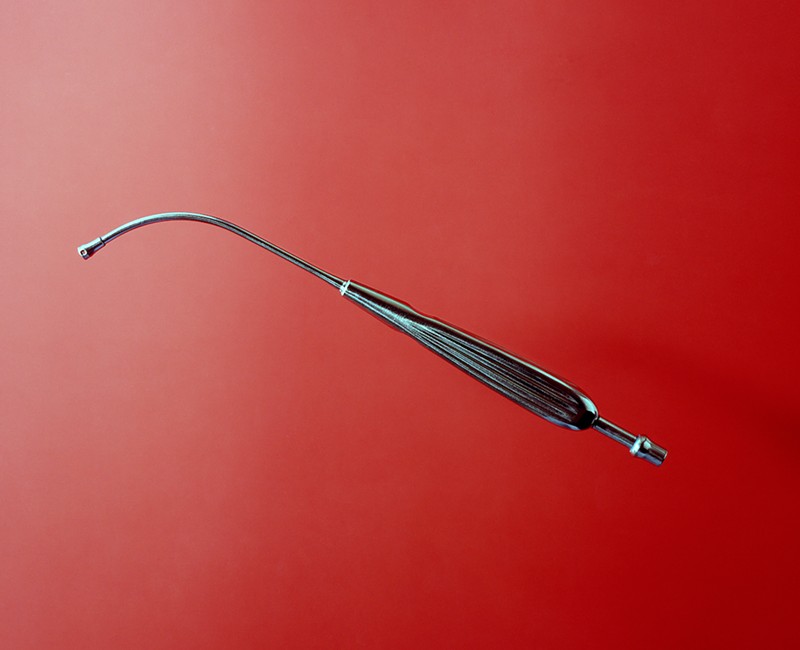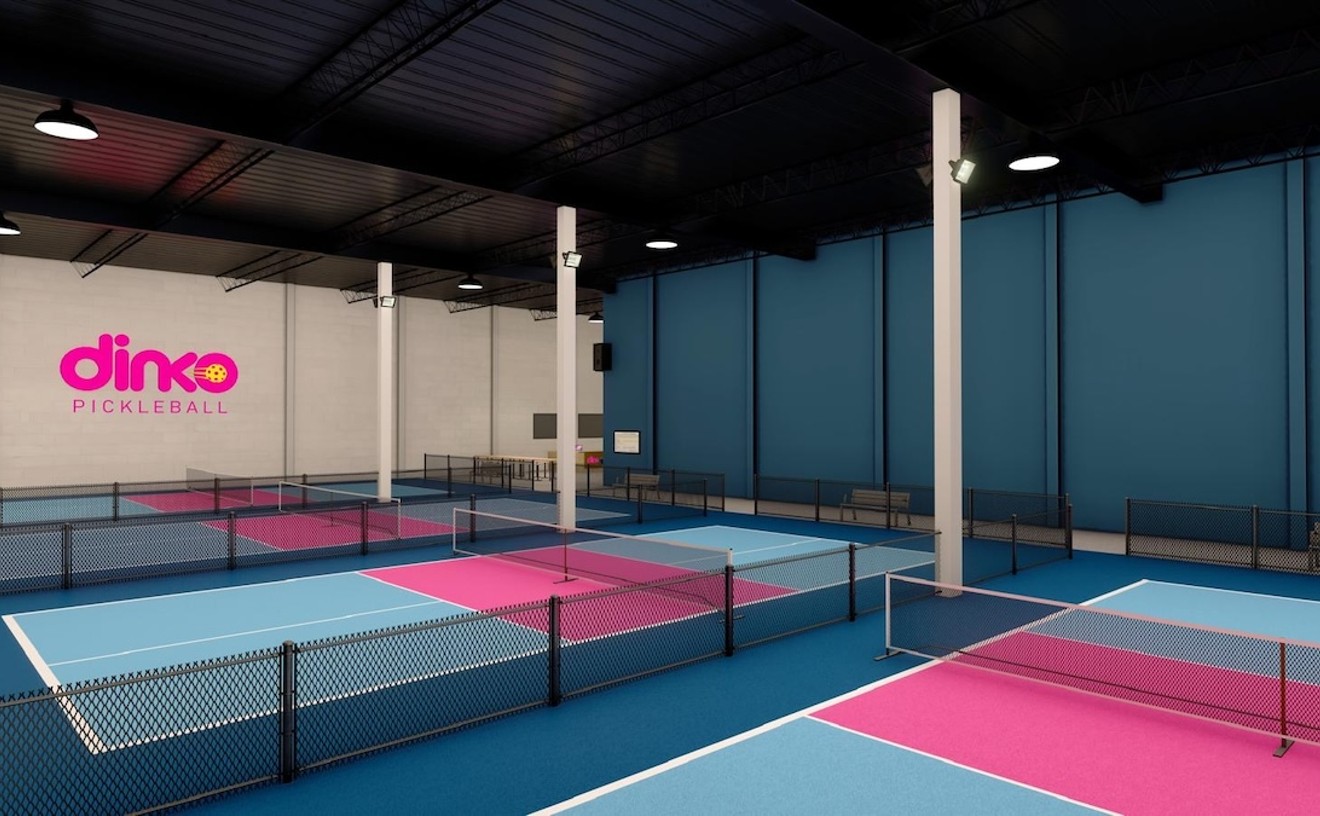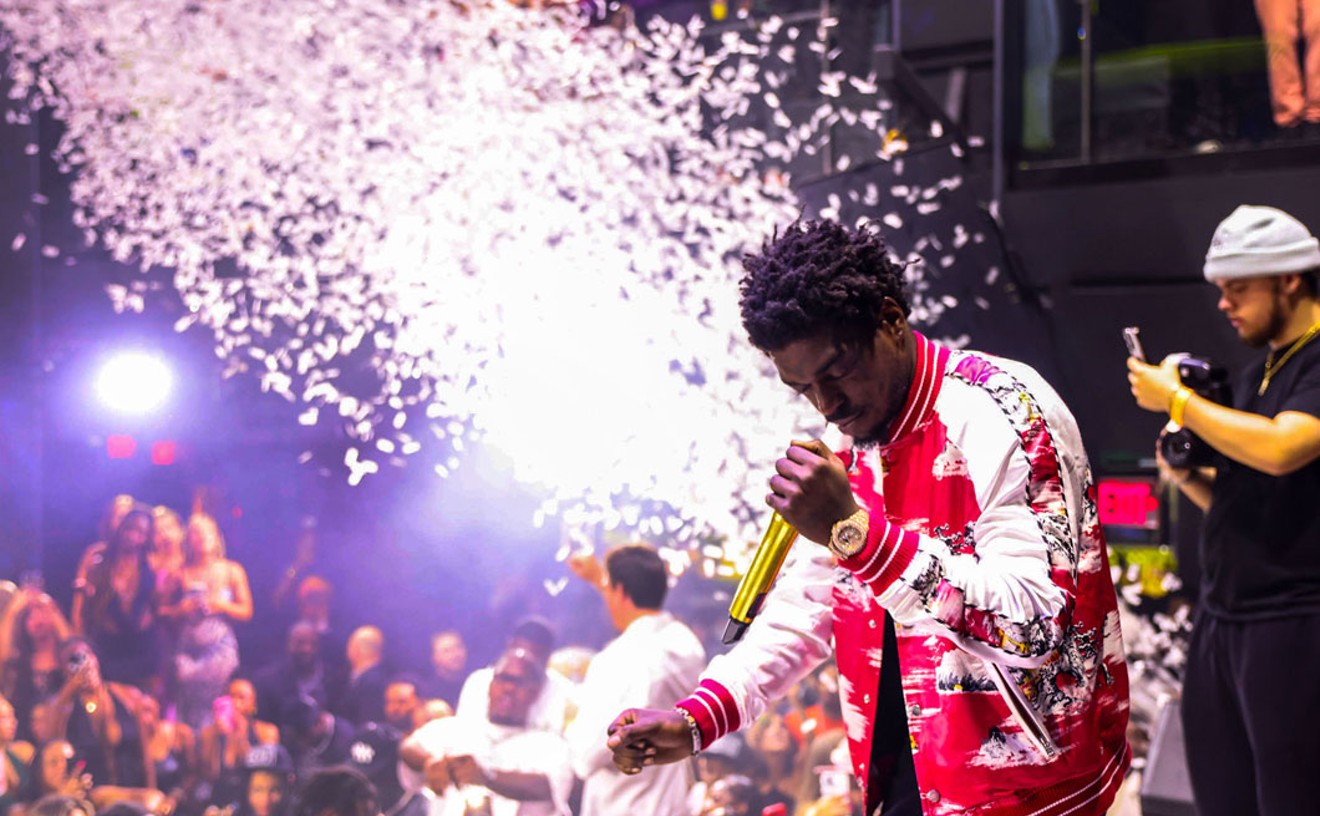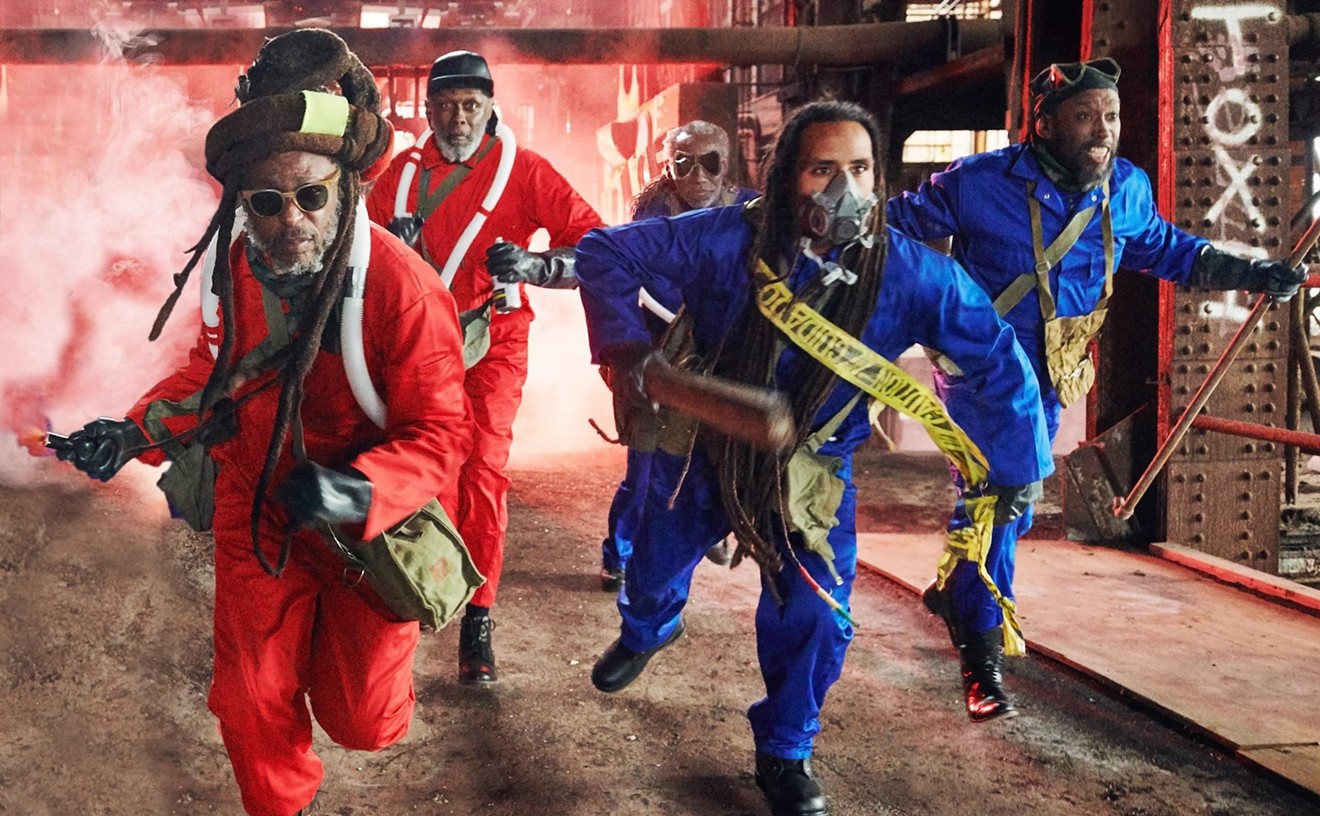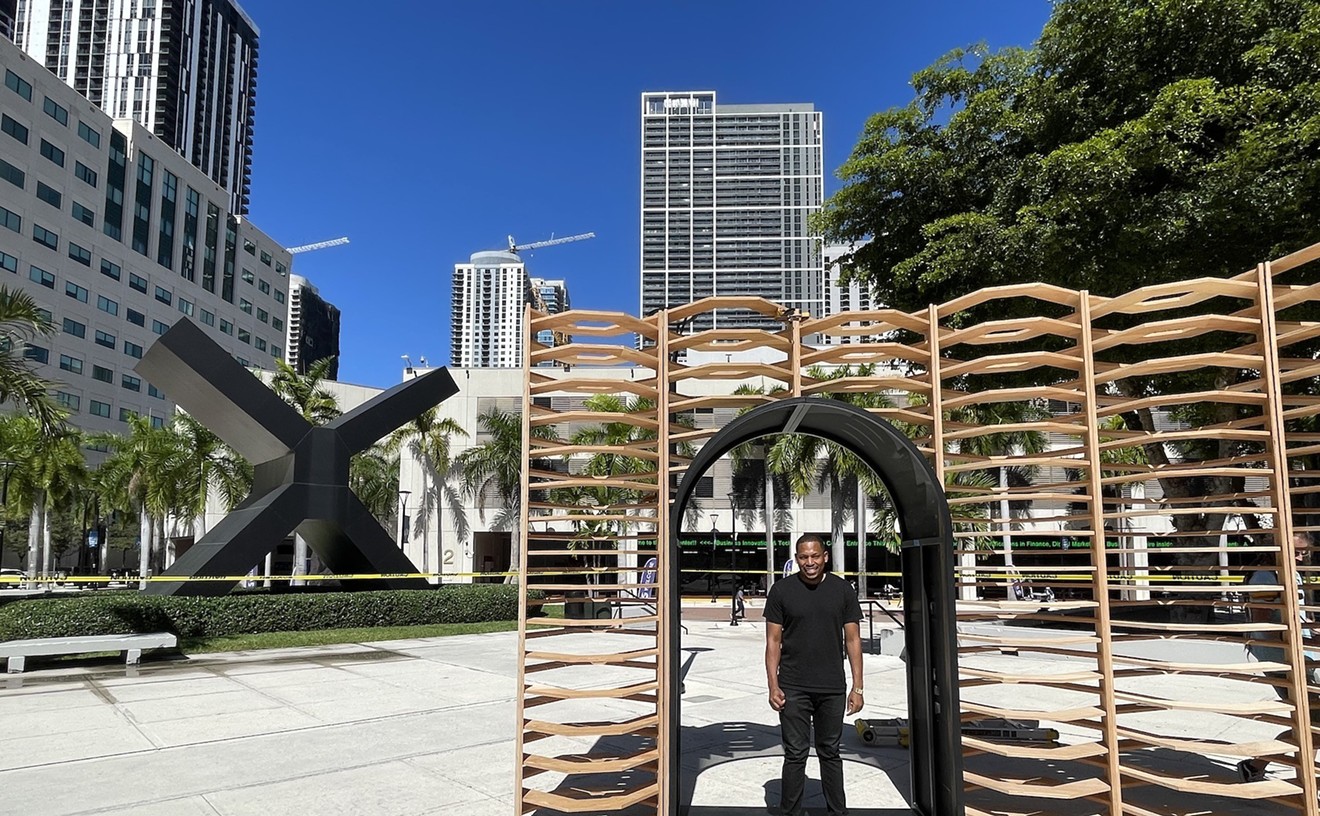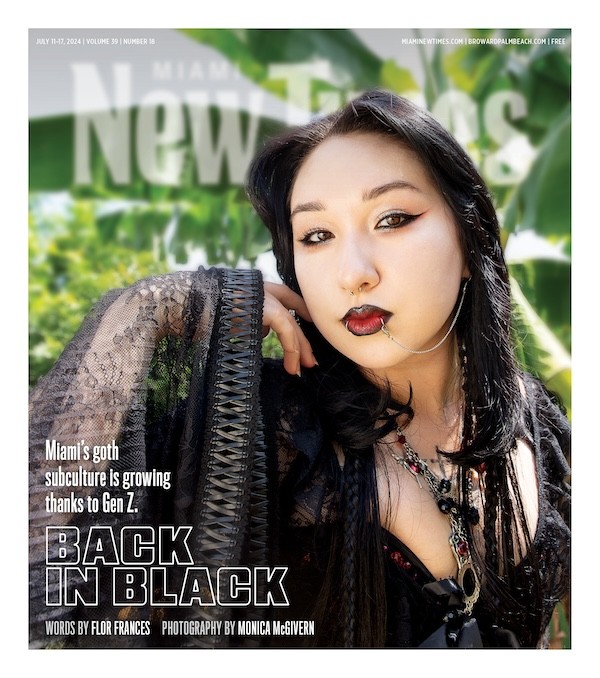"I had a group show in New York," Chirino recalls, "and I had this lady come up to me, a tiny, petite, elder lady, and tell me that my pictures were the most horrific pictures she had ever seen. And when I started looking at her, she had a number tattooed on her arm."
The woman was a Holocaust survivor, and Chirinos' photos reminded her of the concentration camp crematoriums she had narrowly avoided.
The artist, now a professor at Miami Dade College's Kendall Campus, says it's never his intention to offend anyone, but that the content of his photos sometimes elicits extreme reactions. In the case of the elderly woman, he says he was saddened by her experience but grateful that his work provoked such an emotional response.

Both the book and the exhibition are a summation of nearly two decades of working as a biomedical photographer in Miami.
Photo by Tony Chirinos
This is exactly what Chirinos planned for his upcoming solo exhibition, "The Precipice," at the University of Miami Gallery in the Wynwood Building. Based on his eponymous first photography book, published by Portland, Oregon-based boutique photo book publisher Gnomic, "The Precipice" also replicates the book's three-part structure, placing photos from each chapter on the gallery's three walls.
Each takes a different subject as their focus, from the monochromatic depictions of mortality in Farewell to the somewhat fetishistic photos of surgical tools suspended against bright-colored backgrounds titled The Beauty of the Uncommon Tool, after a Walker Evans photo project, "Beauties of the Common Tool," originally published in 1955.
"They're tools that were used in surgery and photographed in a beautiful, ethnographic way. So I take [the tools] out of their context and have people think about them. What is that going to be used for? What part of the body is it used for? Why is it so beautiful? Why am I attracted to something that is so horrific? Why am I looking at it like it's candy to the eye?" explains Chirinos.

"I take [the tools] out of their context and have people think about them," the photographer says.
Photo by Tony Chirinos
"I found this organization called the Biological Photography Association," he recalls. "And so, I reached out to them, told them what my predicament was, and they really helped me."
The association gave him instructions on everything from photographing surgeries to which lenses to use. Although most of his work involved taking educational photos of medical procedures for teaching doctors, he also took portraits and family photos for staff, ribbon-cutting ceremonies, and anything else the hospital needed. He supplemented his pay with freelance work and his own projects in order to make ends meet.
The most interesting assignments, he says, involved surgeries and autopsies. These, Chirinos recalls, he took very seriously, especially when he returned to school at Florida International University, where professors encouraged him to think of his work as more than a job.
"You have to respect the HIPAA law," he says. "What could I do to protect the patient and not lose my job? So, I spoke to administration and public relations, and basically they gave me the green light, they just said, 'Just make sure no identification is shown.'"
Intensely aware of the privacy risks his work could pose, Chirinos became adept at photographing around the patient. He would snap shots of surgical tools, of lights, of sheets draped in various positions, and of doctors huddled around the table. Many of his shots are photographed in dramatic, clinical black and white, which imbues them with all the power and severity that comes with going under the knife. They're perhaps more provocative for what they don't show, which could explain the intense reactions.
"I love making the viewer create their own horror in their head," he admits.
Following the UM Gallery exhibition, "The Precipice" will travel to Brooklyn's Transmitter gallery in April. The show marks Chirinos' New York gallery debut and a peak of interest in his work, which he attributes to the COVID-19 pandemic. The photographer says he struggled to find an avenue for publishing and showing his work before the pandemic but considers that the event made some people reassess their own relationship to death. Chirinos' photos provide a certain memento mori.
"We don't know what ephemeral relationships and feelings anybody's gonna get when they look at these pictures. The only thing that I'm trying to do is [tell people] that you have to look at your own mortality," Chirinos says. "If there's one thing we're all gonna do, it's that we're all gonna die."
– Douglas Markowitz, ArtburstMiami.com
Tony Chirinos: "The Precipice." On view Friday, February 1 through Friday, February 24, at the University of Miami Art Gallery, 2750 NW Third Ave., Miami; 305-284-3161; art.as.miami.edu. Admission is free.

